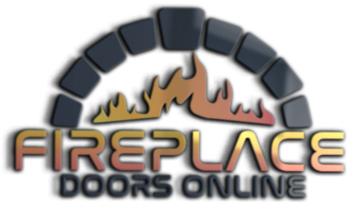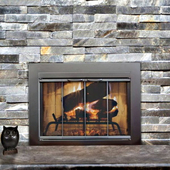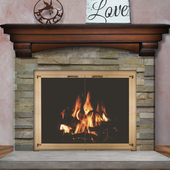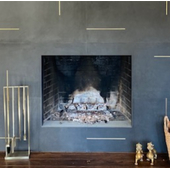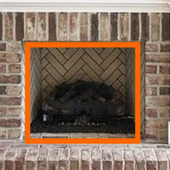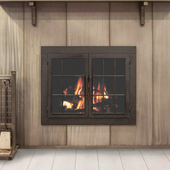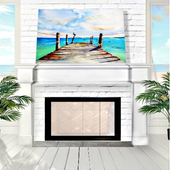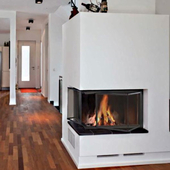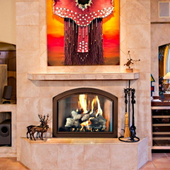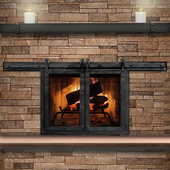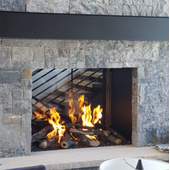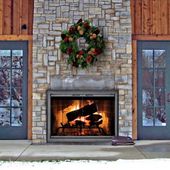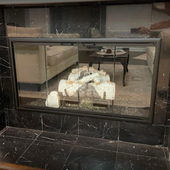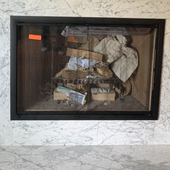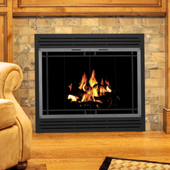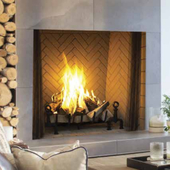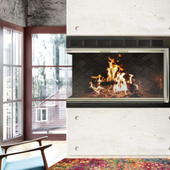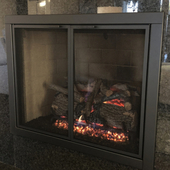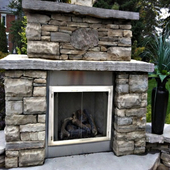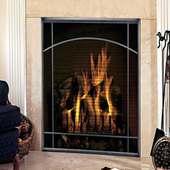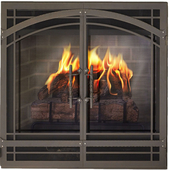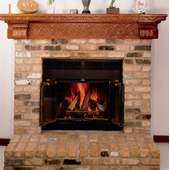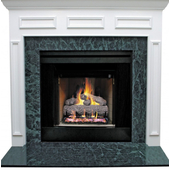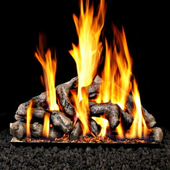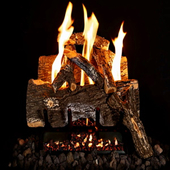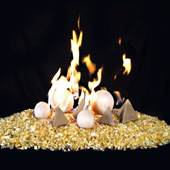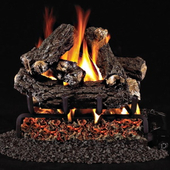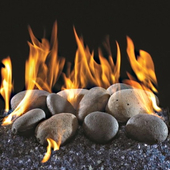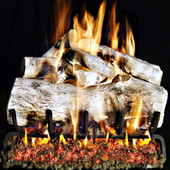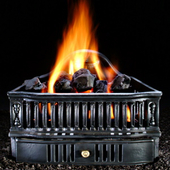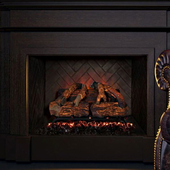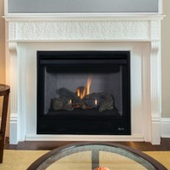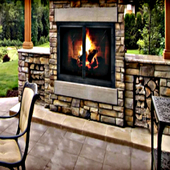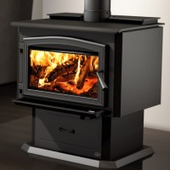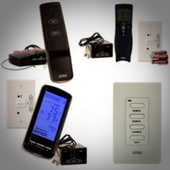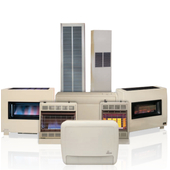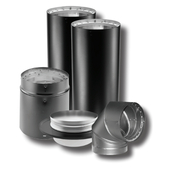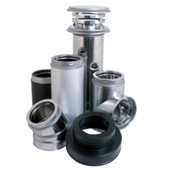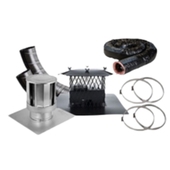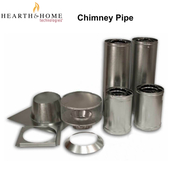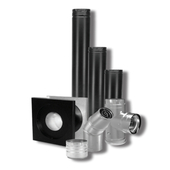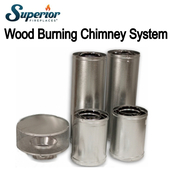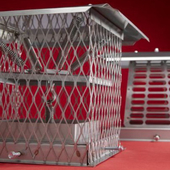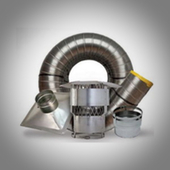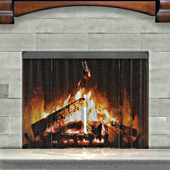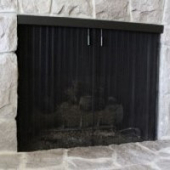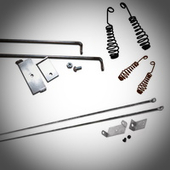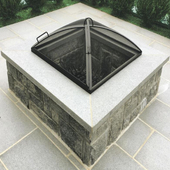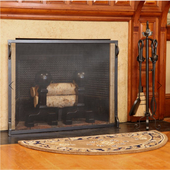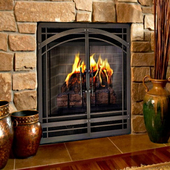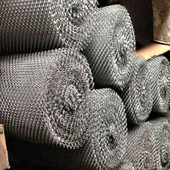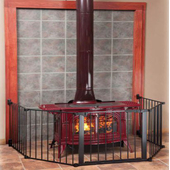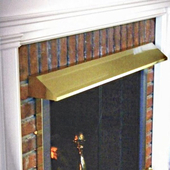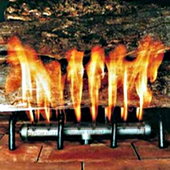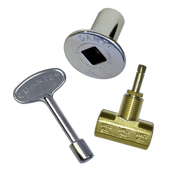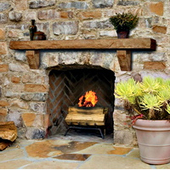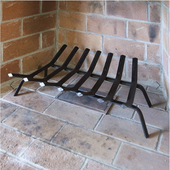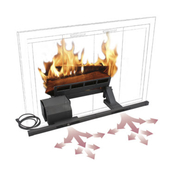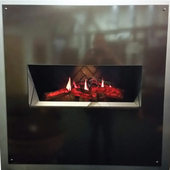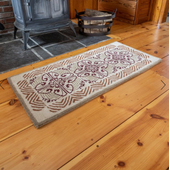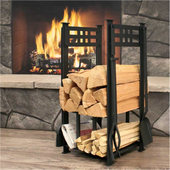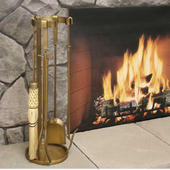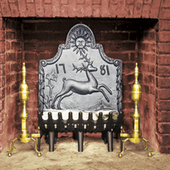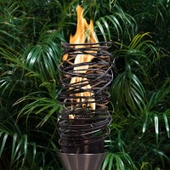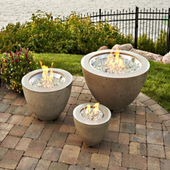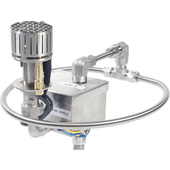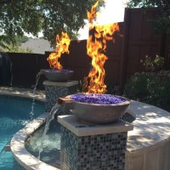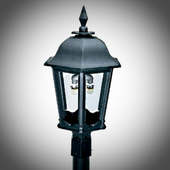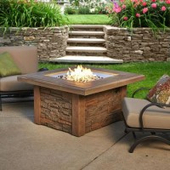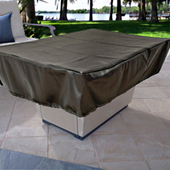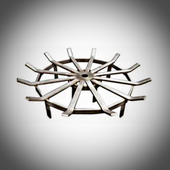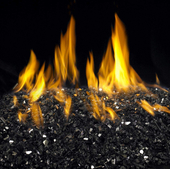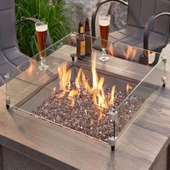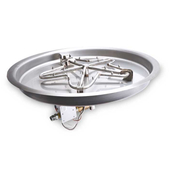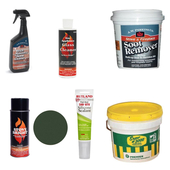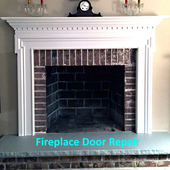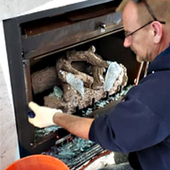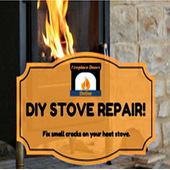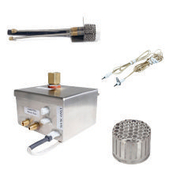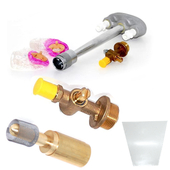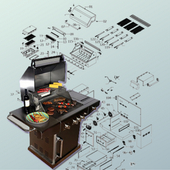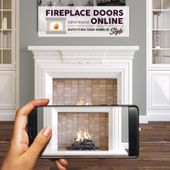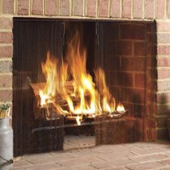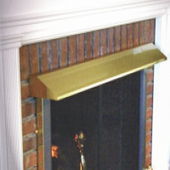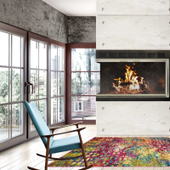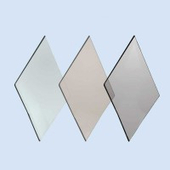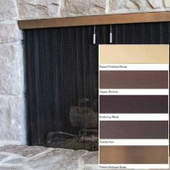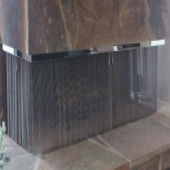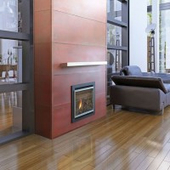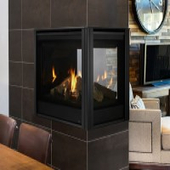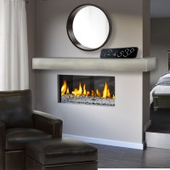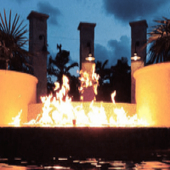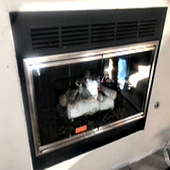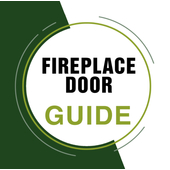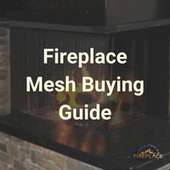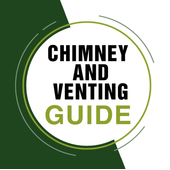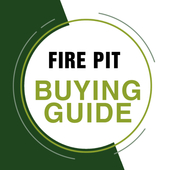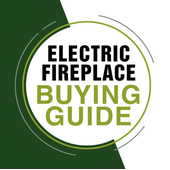Superior 4.5" x 7.5" Secure VentTM Horizontal Termination - Small Square (SV4.5HTSS)
*Not for use on all models, refer to appliance installation manual
Features:
The "Superior Secure Vent Small Square Horizontal Termination" is a component used in heating, ventilation, and air conditioning (HVAC) systems, specifically in the context of venting for gas appliances or fireplaces. It plays a crucial role in safely venting exhaust gases and combustion byproducts from the appliance to the outside environment while preventing any backflow or leaks.
Here are some key features and information about this component:
- Venting Purpose: The Small Square Horizontal Termination is designed to be part of a venting system for gas appliances or fireplaces. It ensures that exhaust gases are safely expelled from the appliance and released outside your home or building.
- Safety: Venting systems are critical for the safe operation of gas appliances, as they help prevent the buildup of harmful gases like carbon monoxide within the living space. This termination component is designed to meet safety standards and regulations to ensure a secure and efficient venting process.
- Square Design: The "Small Square" design indicates that this termination component has a square shape. The choice of square or round terminations often depends on the specific requirements of the HVAC system and the aesthetics of the installation.
- Horizontal Installation: This component is designed for horizontal venting applications, which means it is typically installed parallel to the ground. The horizontal termination is used when the exhaust gases need to be directed horizontally through an exterior wall.
- Material and Durability: It is typically made of durable materials, such as stainless steel or other corrosion-resistant materials, to withstand the conditions of venting hot gases.
- Compatibility: Ensure that this termination component is compatible with the specific model and type of gas appliance or fireplace you are using. Proper compatibility ensures efficient and safe venting.
- Professional Installation: Installation of venting components like the Superior Secure Vent Small Square Horizontal Termination should be carried out by a qualified HVAC technician to ensure proper setup and adherence to safety codes.
Before purchasing and installing this termination component, it's essential to consult the manufacturer's instructions, local building codes, and regulations to ensure compliance with safety standards. Proper installation and maintenance of venting systems are crucial for the safety and efficiency of your gas appliances or fireplace.
Specifications:
- Materials and Construction: Aluminized inner wall with galvanized steel outer wall
- Secure twist lock connections
- Diameters: 4 1/2 inch inner diameter and 7 1/2 inch outer diameter
- "Floating" inner pipe for safety
- Limited Lifetime Warranty
Key Advantages of Using a Rigid Vent System:
Using a rigid vent system in various applications, such as HVAC systems, appliances, and industrial processes, offers several advantages compared to other types of venting systems, such as flexible ducts or chimneys. Here are some key advantages of using a rigid vent system:
- Improved Airflow Efficiency: Rigid vent systems provide a smooth and unobstructed pathway for airflow, reducing friction and resistance. This results in better airflow efficiency, which can improve the overall performance of HVAC systems and appliances.
- Durability: Rigid vent components are typically made from robust materials like galvanized steel, stainless steel, or PVC, making them highly durable and resistant to wear and tear. They can withstand temperature fluctuations, exposure to moisture, and other environmental factors.
- Reduced Air Leakage: Rigid vent systems are less prone to air leakage compared to flexible ducts, which can develop leaks or tears over time. This helps maintain consistent air pressure within the system and prevents energy wastage.
- Fire Safety: In applications where fire safety is a concern, such as in venting gas appliances, rigid vent systems are preferred because they are less likely to catch fire or propagate flames. They can contain and safely channel hot gases.
- Resistance to Pests: Rigid vents are less susceptible to pests like rodents and insects compared to flexible ducts, which can be chewed or penetrated. This helps maintain indoor air quality and prevents contamination.
- Compliance with Building Codes: Many building codes and safety regulations require the use of rigid vent systems in specific applications, especially those involving gas-fired appliances. Using rigid venting ensures compliance with these codes and standards.
- Longevity: Properly installed rigid vent systems have a longer service life compared to flexible ducts. They are less likely to deteriorate or require frequent replacement, saving on maintenance costs over time.
- Easy Cleaning and Maintenance: Rigid vent systems are typically easier to clean and maintain due to their smooth interior surfaces. This helps prevent the buildup of dust, debris, and contaminants that can affect indoor air quality.
- Customization: Rigid vent components come in various sizes and configurations, allowing for customization to meet specific installation requirements. This versatility makes them suitable for a wide range of applications.
- Improved Aesthetics: Rigid vent systems can be designed to be aesthetically pleasing, especially when used in visible areas of a building or home. They can be painted or finished to match the surroundings.
While rigid vent systems offer numerous advantages, it's essential to ensure that they are properly designed and installed by qualified professionals to maximize their benefits and comply with local building codes and safety standards. Inappropriate installation can negate the advantages and pose safety risks.
Choosing The Perfect Venting System for Your Fireplace
To ensure security, effectiveness, and usefulness, it is crucial to select the ideal venting system for your fireplace. There are several factors to consider when selecting a venting system, including the type of fireplace, fuel source, local building codes, and your personal preferences. Here's a step-by-step guide to help you make the right choice:
Determine the Type of Fireplace:
- Wood-Burning Fireplace: If you have a traditional wood-burning fireplace, you'll need a chimney or venting system designed to handle the combustion byproducts and smoke.
- Gas Fireplace: Gas fireplaces can be vented through either a direct vent or a ventless (vent-free) system. Your choice will depend on local regulations and your heating needs.
Understand Venting Options:
- Chimney: A traditional masonry or metal chimney is suitable for wood-burning fireplaces. Ensure it is in good condition and meets local codes.
- Direct Vent: This system is commonly used for gas fireplaces. It has a sealed combustion chamber and draws fresh air from outside for combustion while expelling exhaust gases outside through a dedicated vent pipe.
- Ventless (Vent-Free): Ventless gas fireplaces don't require a chimney or external venting. They burn gas cleanly and release heat and moisture into the room. However, they are subject to strict regulations in some areas due to air quality concerns.
Check Local Building Codes:
- Before making a decision, check local building codes and regulations. Some areas have strict requirements for venting systems to ensure safety and air quality. Compliance with these codes is crucial.
Consider Efficiency:
- Choose a venting system that maximizes energy efficiency. Direct vent systems are more efficient than traditional chimneys because they minimize heat loss.
Safety Considerations:
- Safety should be a top priority. Ensure that the venting system is correctly installed and maintained to prevent carbon monoxide leaks and other hazards.
Aesthetics and Design:
- The venting system should complement your home's design and aesthetics. It should be as unobtrusive as possible while still performing its function.
Professional Installation:
- It's strongly recommended to have your venting system installed by a qualified professional who is familiar with local codes and regulations.
Maintenance:
- Regular maintenance is essential to keep your venting system working efficiently and safely. Schedule annual inspections and cleanings, especially for wood-burning chimneys.
Budget:
- Consider your budget for both the initial installation and ongoing maintenance. While ventless systems may be cheaper to install initially, they may have higher operating costs due to increased gas consumption.
Environmental Impact:
- If you're concerned about environmental impact, consider the emissions associated with your chosen venting system. Wood-burning fireplaces, for example, can release particulate matter and other pollutants into the air.
Ultimately, your individual circumstances, such as the sort of fireplace you have, your local laws, and your own preferences for aesthetics and efficiency, will determine the ideal venting system for your fireplace. You can make a more informed choice by speaking with our experts at fireplace doors online.
A Comprehensive Guide to Buying a Fireplace Venting System
A fireplace venting system is an essential part of your fireplace that makes sure that smoke and combustion byproducts are securely removed from your home while providing a supply of fresh air for burning. Whether you're installing a new fireplace or upgrading an existing one, this comprehensive buyer's guide will help you understand the various venting options and make an informed decision.
1. Types of Fireplace Venting Systems:
There are three main types of fireplace venting systems:
- Chimney Venting: Traditional masonry fireplaces typically have a brick or stone chimney. They rely on natural convection to draw air in and expel smoke out through the chimney. This type of venting is suitable for wood-burning fireplaces.
- Direct Venting: This is a sealed system that draws combustion air from the outside and expels exhaust gases through a vent pipe. Direct vent fireplaces are highly efficient and can be used with various fuel types, including gas and propane.
- Ventless or Vent-Free Venting: These fireplaces do not require a venting system, as they are designed to burn fuel cleanly enough that the combustion byproducts can be safely released into the room. They are typically gas-powered and can be installed almost anywhere.
2. Choosing the Right Type:
- Consider Your Fuel Type: Determine whether you want a wood-burning, gas, or electric fireplace. Your fuel choice will influence the type of venting system you need.
- Efficiency and Convenience: Direct vent and ventless fireplaces are typically more energy-efficient and easier to install than traditional chimneys. Consider your preferences for convenience and energy efficiency.
3. Sizing and Location:
- Calculate Heating Needs: Determine the heating capacity you need based on the size of the room or area you want to heat. This will help you choose an appropriately sized fireplace and venting system.
- Location: Decide where you want to install your fireplace. The location may impact the type of venting system you can use and the venting route.
4. Venting Materials:
- Chimney Materials: If you're using a traditional chimney, consider the type of materials you want for its construction, such as brick, stone, or metal flue liners.
- Vent Pipe Material: For direct vent fireplaces, the vent pipe is typically made of aluminum or stainless steel. Ensure the materials are suitable for your fuel type and meet local building codes.
5. Installation and Safety:
- Professional Installation: Proper installation is crucial for safety and performance. Hire a certified technician or contractor experienced in fireplace venting systems.
- Clearances: Ensure proper clearances to combustibles are maintained as per the manufacturer's guidelines and local building codes.
6. Venting Accessories:
- Termination Caps: These protect the vent opening from weather and pests.
- Chimney Liners: If you have a masonry chimney, consider installing a stainless steel liner to improve efficiency and safety.
7. Maintenance and Cleaning:
- Regular Inspections: Schedule regular inspections and cleaning to ensure your venting system is functioning correctly and free from debris or blockages.
8. Legal and Safety Considerations:
- Local Codes and Regulations: Check with your local authorities to ensure compliance with building codes and regulations regarding fireplace venting.
- Carbon Monoxide Detectors: Install carbon monoxide detectors in your home, especially if you have a gas fireplace.
9. Budget Considerations:
- Initial Cost: Consider both the upfront cost of the fireplace and venting system, as well as the ongoing operating costs (fuel, maintenance, etc.).
10. Aesthetics:
- Design and Style: Choose a venting system that complements your home's aesthetic and blends well with your interior design.
Remember that safety should always be your top priority when selecting and installing a fireplace venting system. Consult with professionals and follow manufacturer guidelines and local regulations to ensure a safe and efficient installation.
No posts found
Click on the Add New button below to submit a question about this product. Please ONLY submit product questions. For all other inquiries, please contact us at 1-888-986-1535.
